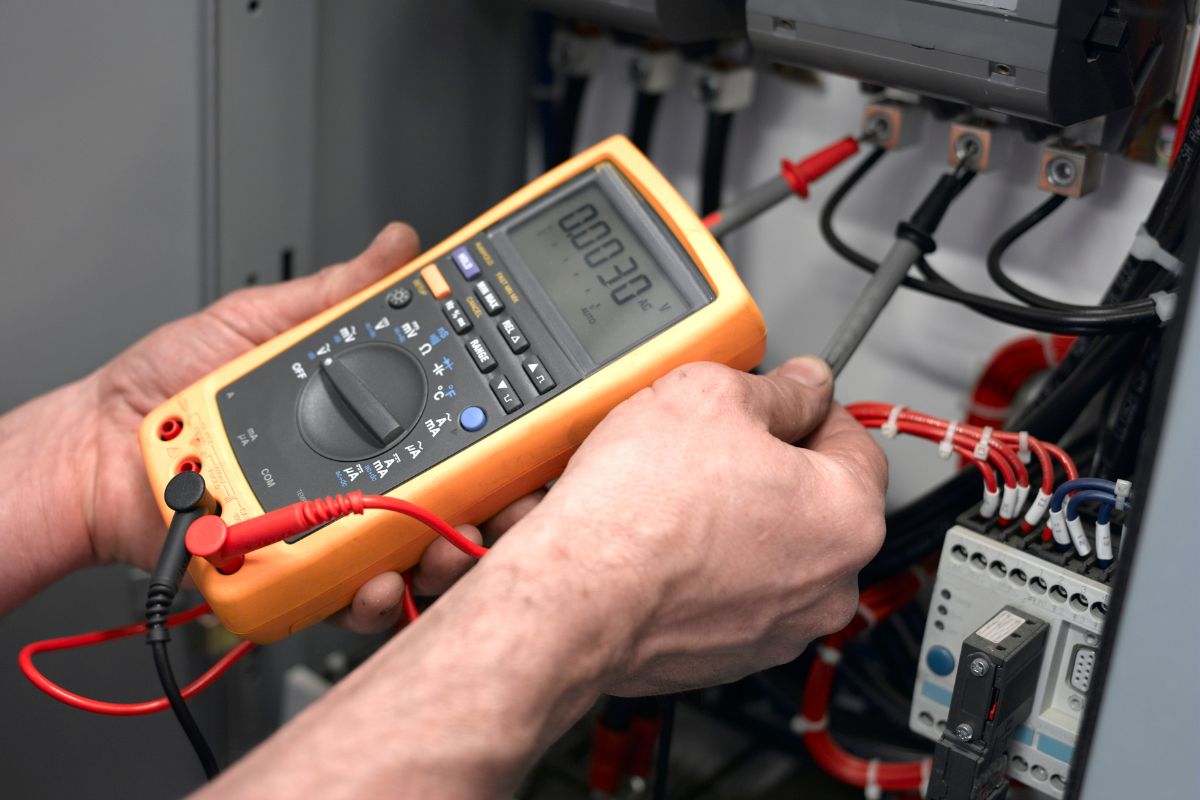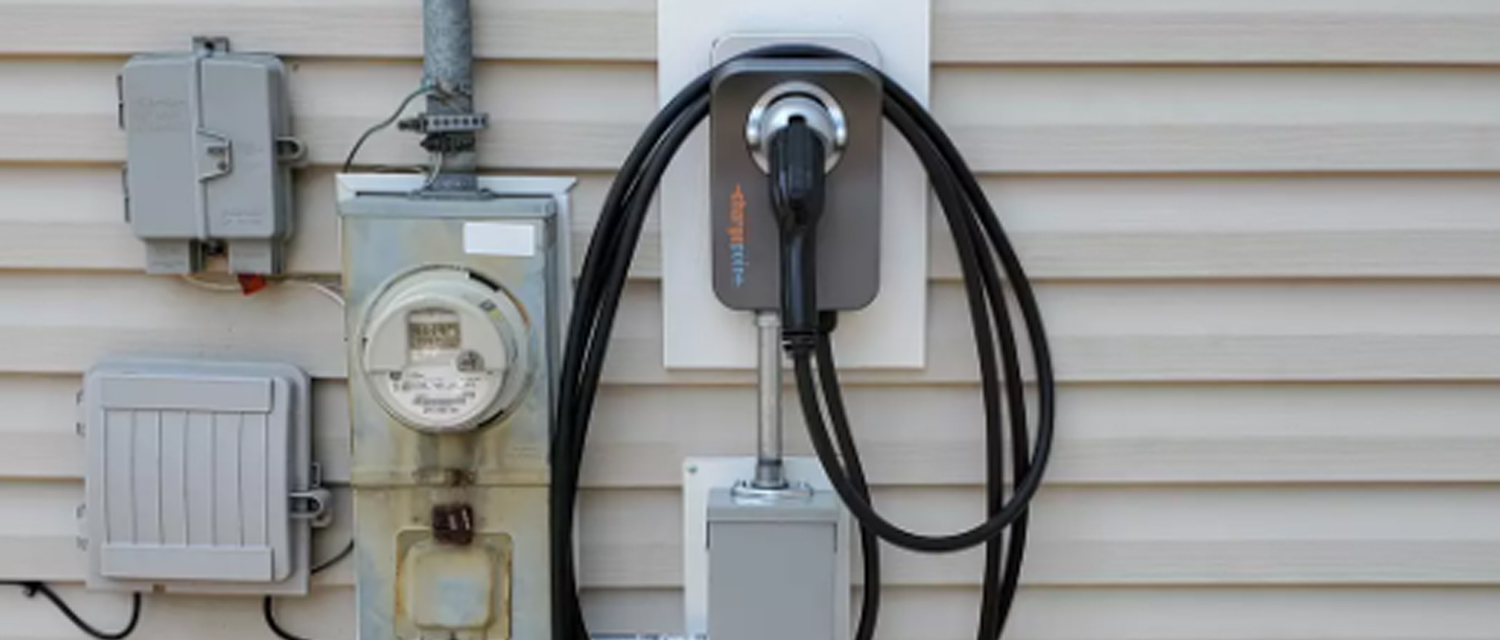Get free quotes within minutes
What Is Test and Tag?

Table Of Content
- Introduction
- What is the Function Of the Test and Tag System?
- Key Components Involved In Test And Tag
- Test and Tag Frequency
- Which Equipment Require Test & Tag?
- Who Can Perform Test and Tag Work?
- Best Practices for Test and Tag
- Conclusion
What is Test & Tag? Assure Safety For Your Electrical Appliances
Today it is critically important to adhere to electrical safety, especially in organizations where electrical devices are used frequently. One of the most efficient ways of safeguarding and meeting all the requirements is the so-called “test and tag” system. This guide will explain all relevant features and aspects of test and tag processes such as their significance, standards and processes, and recommendations for finding an electrician and companies. We have also given why testing and tagging is crucial for electrical appliances.
What is the Function Of the Test and Tag System?
Test and tag is a process that encompasses checking, examining, evaluating and indicating the status of electrical devices relating to safety and conformity to standard test and tag. It is a useful exercise to assess risk factors, reduce the chances of electrical mishaps, and guarantee that equipment is safe to use.
- Safety Assurance: Testing and tagging procedures provide information on possible risks characteristic of electrically powered equipment. That way all equipment is working properly and safely hence minimizing the rate of electrical fires, and shocks among others that may occur.
- Compliance with Legislation: In Australia, businesses are required to comply with the AS/NZS 3760:2009 Australian standard, which provides the procedural guide for testing and tagging of electrical appliances. Failure leads to legal risk and sanctions, insurance costs rise, and one could be at law blamed for any incident occurrence.
- Risk Management: Through the adoption of a proper test and tag schedule, risks related to electrical appliances are easily addressed. This is true because companies want to work on problems and have a safer working environment.
- Insurance Requirements: Most insurance companies recommend that power equipment be checked & tagged on a routine basis, and sometimes make it mandatory to receive coverage. Adhering to the requirements could be useful in the attainment of insurance entitlement in case of a mishap.
Key Components Involved In Test And Tag
Visual Inspection:
The first procedure is a direct visual inspection of the appliance. In general, it is conducted to see if there are normal wear and tear, damages to the cords, plugs and any other part or accessory and safety standards to enhance safety for usage.
Electrical Testing:
Different electrical tests are done to determine the efficiency of the appliance. This typically includes:
- Earth Continuity Test: Checks that there is an earth connection available.
- Insulation Resistance Test: Verifies that the insulation can reduce the possibility of leakage of electric current.
- Polarity Test: Checks that the live, neutral and earth wires are connected rightly to protect anyone from getting an electric shock when handling an appliance or using any electrical product.
Tagging:
When an appliance has gone through the check and testing and meets all the required standards it is fitted with a label showing its condition. The tag includes vital information such as the date of the test, the next due date for testing and information on the technician who did the test.
Documentation:
Documentation should be done to document the process for compliance with the law as well as to use in future. This is in the form of documentation of all the appliances tested, their results and any rectifications done as a result of the test results.
Test and Tag Frequency
The test and tag procedures can be done frequently depending on the type of equipment, how the equipment is used and where it is mostly used. Here are some general guidelines:
- Portable Equipment: Usually needs to be tested every 6 months, especially in hazardous areas such as construction sites manufacturing companies and the like.
- Low-Risk Environments: Office appliances, or other similar purpose appliances, are generally tested annually.
- Static Equipment: It is recommended that fixed appliances should be tested every 2 to 5 years depending on the extent to which the equipment is used and the climatic conditions of its operating environment.
- Specific Requirements: Some industries have requirements that determine how often the test and tag process needs to take place. For instance, construction sites are said to be subject to more stringent policies not forgetting that they are associated with elevated risk levels.
You should find the guidelines within your business’s field so that you have a measure within which to steer.
Which Equipment Require Test & Tag?
Test and Tag is a safety procedure used to check the electrical safety of portable appliances and equipment, ensuring they are safe to use. Various industries require this process, especially for equipment exposed to wear and tear. Here's a list of common equipment that typically requires Test and Tag:
1. Portable Electrical Appliances
- Power tools (drills, saws, grinders)
- Extension cords and power boards
- Electric kettles, microwaves, and other kitchen appliances
- Heaters, fans, and air conditioning units
- Computers, printers, and monitors
2. Office Equipment
- Desktop computers
- Photocopiers, fax machines, and scanners
- Portable lighting and lamps
- Chargers for phones and laptops
3. Construction and Industrial Equipment
- Electric drills, grinders, and saws
- Welding machines
- Compressors
- Portable generators
- Electrical leads
4. Retail and Hospitality Equipment
- Cash registers, point of sale (POS) systems
- Coffee machines, toasters, and blenders
- Refrigerators and freezers
- Cleaning equipment (vacuum cleaners, floor polishers)
5. Entertainment and Event Equipment
- Audio and visual equipment (speakers, microphones, projectors)
- Lighting rigs and portable stage lights
- Amplifiers and mixers
6. Healthcare Equipment
- Diagnostic tools (e.g., portable ECG machines)
- Portable medical devices (e.g., defibrillators)
- Patient care equipment (heaters, monitoring devices)
7. Outdoor and Recreational Equipment
- Camping equipment (portable lights, heaters, fridges)
- Portable pumps and electric BBQs
- Outdoor event equipment
These devices must be regularly tested, tagged, and maintained to meet safety regulations and avoid risks such as electric shock or fire.
Who Can Perform Test and Tag Work?
The test and tag process should only be conducted by a competent person or a person who has undergone some training procedures. The staff must have adequate knowledge about testing equipment, safety measures and Australian standards. In addition, it is recommended for business organizations to opt for those services that are accredited to meet standards and avoid cases of fraud.
Qualifications and Training:
- Electrical Qualifications: The technician who conducts test and tag must have correct electrical competencies and permits for working with electrical equipment.
- Specialized Training: There is a need for specialized training to ensure that the technicians fully comprehend the different testing needs when conducting test and tag operations and how to best use the testing equipment.
- Continual Professional Development: Regular updating and training apply to new aspects of laws and new knowledge and technologies.
Best Practices for Test and Tag
- Maintain Accurate Records
Maintaining a record of all the tests done is important. This involves the date, result and any action that was taken to correct the deviation. Some of the reasons for keeping proper records include audit and compliance check purposes, or any future acts and omissions’ eventualities relating to safety. - Establish a Regular Schedule
This means that through developing a standard test and tag regime, for the equipment based on the type of the device and the frequency of usage of the equipment, all the appliances will comply. It is helpful to make such due dates into recurring reminders or to add them to scheduling software. - Train Employees
Understanding of test and tag activities to the staff can also be used in boosting general safety. Motivating workers to gather any form of the signal that an appliance could pose a threat to their safety thus needs to be fixed so that accidents may be prevented. - Choose Quality Equipment
Make sure that all electrical appliances purchased are good and have the usual requirements of Australia. Repeated tests arise since poor-quality appliances are more likely to have faults than high-quality ones. - Review and Update Policies
Ensure that any new laws affecting test and tag policies and procedures are incorporated into policies and procedures. It will ensure that new policies on test and tag have been adopted. If policies are updated it will be easier to realize the authorized conformities and safety measures.
Consequences of Test And Tag Nonfulfillment
This is especially an area that guards safety in the working environment, failure to follow test and tag laws could lead to grave repercussions for organizations. Here are some potential repercussions:
- Legal Penalties: Failure to meet safety standards exposes organizations to fines and actions of legal regression by these authorities.
- Increased Insurance Premiums: Each insurance company may raise the insured’s premium for not following safety measures or may deny liability for electrical mishaps or accidents.
- Increased Liability: In the event an occurrence happens, the business cannot prove compliance with test and tag standards, and the legal consequences arising from accidents may rise.
- Damage to Reputation: That is why non-adherence to general safety laws may harm a company's image among clients and, in addition, influence its future performance among workers.
Conclusion
This complete framework for test and tag is critical for safeguarding electrical appliances in different settings. With adequate knowledge of the testing frequency that enables it to detect the specific demands of the varied equipment, organizations can significantly incline the probabilities of risks associated with electric hazards and properly tag these devices and equipment. Such a preventive strategy of action not only protects employees and customers but also contributes to the general increase in workplace security. Those who are unaware of this process should contact certified personnel for testing and tagging, exercising utmost care to ensure that the workplace complies with safety standards for everyone.
Answers to Your Common Questions
The frequency varies: in extremely hazardous environments, portable equipment should be tested every 6 months, whereas moderate to low-risk environment appliances every year. Static equipment can therefore be tested every two to five years.
Test and tag processes and tasks must be performed by a licensed electrician or other competent person for proper adherence to safety guidelines or legal requirements.
Whenever an appliance fails, it should be withdrawn from use, taken for repairs, and tested to establish that it is safe to use again before being returned to service. Documentation shall be proper, especially during a failure; the steps taken afterwards should also be documented well.
The test and tag services should be performed only by professionals to avoid issues with safety standards and legislation.
Contact accredited electrical service providers who have tested and tagged services. This can be obtained by checking on the reviews, references and certifications to gauge the reliability and quality of the source.
Working with electrical equipment with portability at a workplace or any public area needs a test and tag. This includes electrical appliances such as electric power tools, extension leads and office equipment.
YOU MIGHT ALSO BE INTERESTED IN













